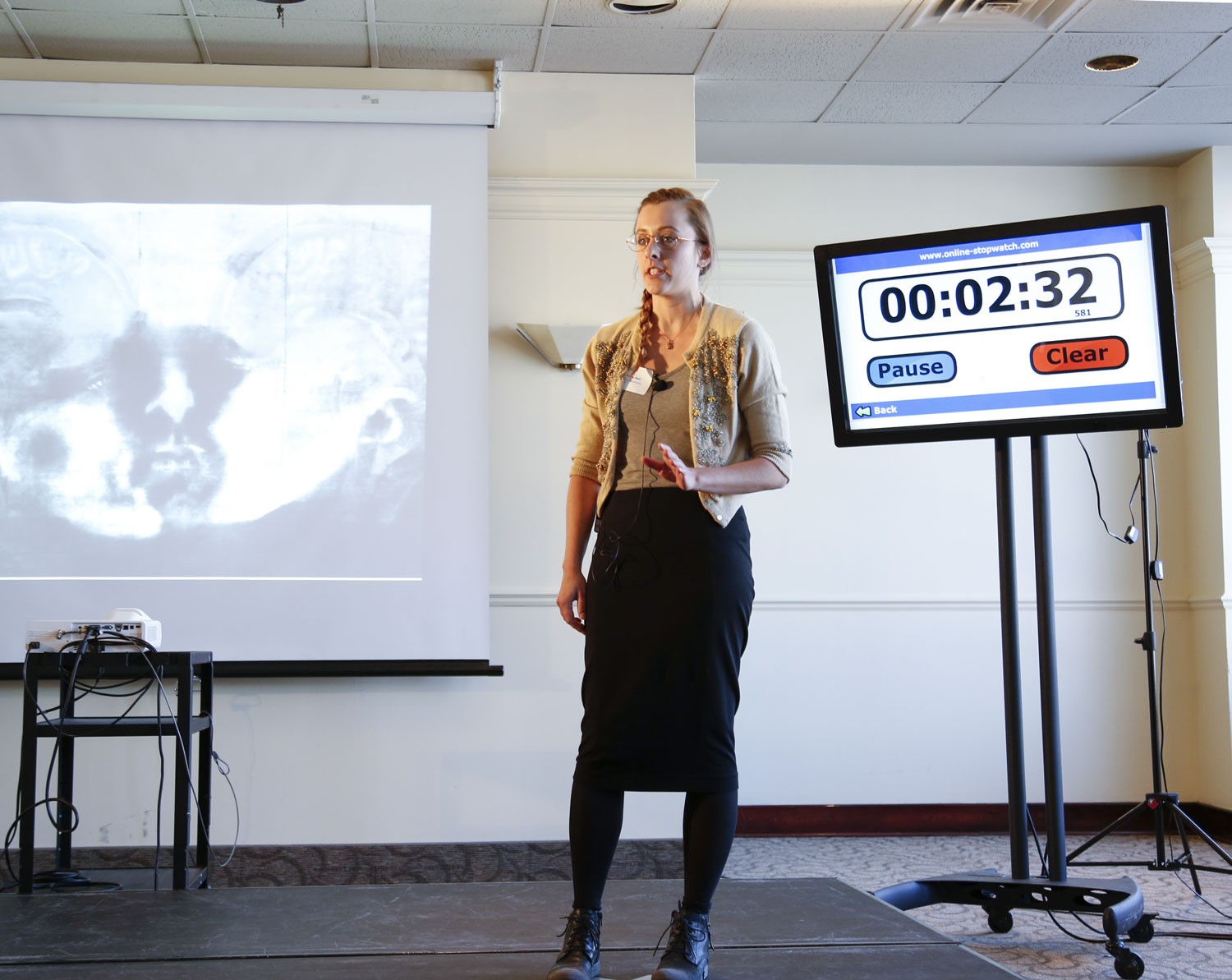Blog post
Using Storytelling to Develop Your 3MT Pitch

Imagine walking into a room being prepared to give a lengthy presentation and then being told that you must express your research ideas in just three minutes. You may think that having only three minutes to speak about your work takes away from the vital points of your research, but it's actually zoning in on the specific importance of your theories, your ideas and your findings. In honour of the Three Minute Thesis & Project Competition, we thought it would be useful to create a blog post that discusses how 3MT invokes the use of storytelling to encourage graduate research to be engaging, succinct and relatable.
The act of condensing the mass of your research into something that you can share in just three minutes causes you to shift from a ‘reporter presenting your work’ to a ‘narrator weaving a compelling anecdote.’ Andrew Stanton, a Hollywood filmmaker, compares storytelling to sharing a joke because of the way that you’re concerned with the end goal, or the punchline. But what goes into a good story?
The premise
This is otherwise known as the why, something that Andy Jolls from Elevate says addresses what matters about your research. What is the problem that is motivating you and why should other people care? This is where you stress the central motivation that is driving you to embark on this academic journey. With any good story, the best way to present this idea is to set a scene—describe it and make it matter.
Draw from emotion
You do research on a topic because you’re interested in it and learning about it excites you. A good storyteller finds a way to transfer that excitement and passion to others. This can be done by personalizing and engaging the emotions of the audience that you are speaking to. Don’t speak in abstracts or broad generalities, make the thing that you are speaking about more tangible, something that people are familiar with, which makes it easier for them to feel connected to what you’re talking about.
Furthermore, an audience is comprised of a diverse collection of personalities and intellects. You can’t expect that the crowd you’re speaking to will automatically understand or share the same interest in the research that you’re doing. So, cut down on the specialized language that carries weight within your discipline and use universal terms.
Our advice
To help you get a sense of how you can break down your research and present it in a more engaging, succinct and relatable manner, here is some advice from GradProSkills’ Racha Cheikh-Ibrahim, a 3MT coach and the winner of a previous 3MT competition. Racha states that:
"The best technique is to concentrate on one important idea 'what is the take-home message from this pitch? What is it in for me?' I would like to think of this idea as the toothpick that usually holds the club sandwich in place. No matter how many layers you put in that sandwich, you need that one item/idea (the toothpick) that will keep things in order for to create a proper sandwich."
"When we talk about our research, we feel that we need to talk about all the details that are very important to us, since we are so proud of what we are doing. The reality is that these details may be too technical and might risk us losing our audience. Students need to think about the audience rather than themselves and think about what they want the audience to know. Once that idea is clear, students can build the layers of the sandwich."
What goes into creating that perfect club sandwich thesis pitch:
The club sandwich is comprised of:
- Toast on both sides – these are two soft ideas that will grab the audience’s attention.
- Fresh layers of lettuce and tomatoes – these are the explanations for why you're doing this research and how important it is on a larger scale.
- The meat or hearty part of the sandwich – this is the core of what you're doing and how you're doing it.
- Mayo and cheese – which is the discussion that focuses on your research findings and how the research is important. This links back to the big picture (the toast), reminding the audience of the idea and why they should care about it.
According to Racha, "The key is less is more. You want to have just enough ingredients in this sandwich to give them the highlight so they have an idea about what is being presented."
Racha believes that the technique that works best for her is to write a draft of a 3MT pitch, leave it and come back to it with a fresh mind. “You need to get away from it to see the whole picture as we tend to get lost in the details and that is exactly what you want to avoid doing in a 3MT talk,” explains Racha.
